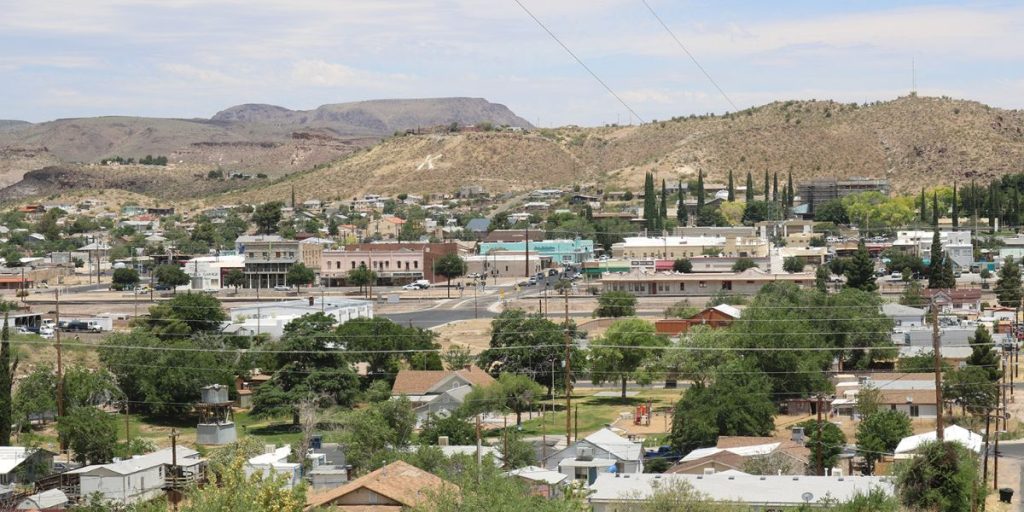For many, Arizona is a haven of peace and excitement, thanks to its beautiful scenery and exciting cities. To be sure, not every Arizona town is booming. Actually, there are a number of towns where people are fleeing at a frightening pace. This story delves deeper into five Arizona towns that residents are rushing to escape.
The wide desert environment of Arizona is dotted with peaceful, often struggling little towns, in sharp contrast to the vibrant cities of Phoenix and Tucson. The state’s sunny weather and abundant metropolitan work prospects continue to entice new inhabitants, but in certain places, the situation is completely different. People in these areas are fleeing in droves in quest of greener pastures and more prosperous lives elsewhere. Come with me as I investigate five Arizona towns that are seeing precipitous drops in population.
Holbrook
The population of the little town of Holbrook in Navajo County has dropped dramatically throughout the last decade. The United States Census Bureau reports that between 2010 and 2020, the population of Holbrook has declined by about 15%. This drop shows just how bad things are for the town.
Among the main causes of Holbrook’s dwindling population is its faltering economy. Holbrook, which was once a bustling center thanks to its position on Route 66, has witnessed a fall in tourists and related companies. There aren’t many jobs in town, and the typical household income is much lower than the state average, therefore a lot of people leave town to find work.
The high crime rates in Holbrook have also been a problem. Holbrook has a greater crime rate than the typical American city, according to the FBI’s UCR program. There is a serious problem with property crimes in particular, which makes locals afraid and drives them to seek out safer neighborhoods.
Another reason people are leaving Holbrook is because there aren’t any modern conveniences or infrastructure.
Read More: All of a Sudden, This Little Town in Arizona became the Second Most Murderous Place in the State
Winslow
The population of Winslow, a town in Navajo County, has dropped significantly as well. A 12% decline in population over the last decade shows how difficult it is for the municipality to hold on to its current population.
One major contributor to Winslow’s dwindling population is the town’s economic woes. Despite being conveniently located on both Route 66 and the Santa Fe Railway, the town’s economy has been struggling as of late. The unemployment rate is greater than the state average since many firms have closed and there are minimal job possibilities.
Another major problem in Winslow is the crime rate. Particularly common are crimes against property, which contribute to the town’s far higher crime rate compared to the rest of the country. since of this, many locals are looking for somewhere to settle down since they feel unsafe.
Douglas
The population of Douglas, a border town in Cochise County, has dropped dramatically, falling by almost 10% in the last decade. Border towns in Arizona are facing bigger issues, and this decline is a sign of that.
Douglas has been dealing with financial issues for quite some time. Once boosted by cross-border trade with Mexico, the town’s economy has taken a major damage due to shifts in trade policies and general economic downturns. High unemployment rates and a lack of work prospects are results of the closure of numerous important firms.

Douglas has an alarmingly high crime rate compared to the rest of the country. One factor that exacerbates problems like drug trafficking and associated crimes is the closeness to the U.S.-Mexico border. Because of the high crime rate, many people have started looking for safer neighborhoods to live in.
Kingman
Over the past decade, the population of Kingman, a town in Mohave County, has decreased by around 8%. The town’s economic and social problems are evident in this decrease.
Unemployment and underemployment have become commonplace among Kingman’s population as a result of the town’s faltering economy in recent years. The mining industry’s fall from grace has been devastating to the region, which relied heavily on it for employment. People in this town also have a harder time getting ahead financially because their median household income is lower than the state average.
The town of Kingman has a crime rate that is greater than the national average, making it a noticeable issue. Theft and burglary, which are considered property crimes, are very common. People are now very afraid for their safety, and many have left the area in quest of greener pastures.
Safford
The Graham County community of Safford has lost over seven percent of its population in the last ten years. The town’s economic and social problems are brought to light by this deterioration.
Fewer employment options and a lower-than-average median household income have been symptoms of economic hardship in Safford in recent years. Safford has a greater crime rate than the rest of the country, making it a major problem. Many locals feel unsafe because of the prevalence of property crimes like theft and vandalism.
Water shortages and pollution are just two examples of the environmental problems that have reduced the town’s attractiveness.
Summary
A conglomeration of environmental concerns, high crime rates, a lack of services, and economic hardships is pushing people out of these five Arizona towns. Although Holbrook, Winslow, Douglas, Kingman, and Safford all have their own set of problems, there are a lot of things that make them less appealing to people who live there.
These towns must tackle their fundamental problems if they want to save themselves from the exodus of residents seeking greener pastures and more promising careers. In spite of the difficulty of the task ahead, it is critical to identify the issues plaguing these communities and work to resolve them if they are to be revived.